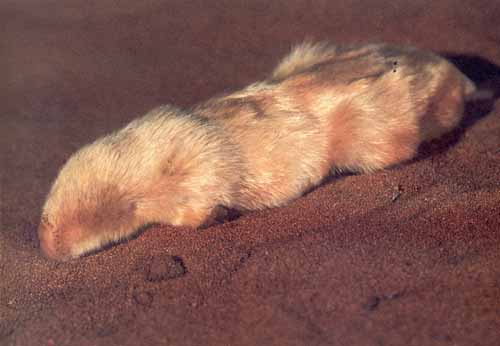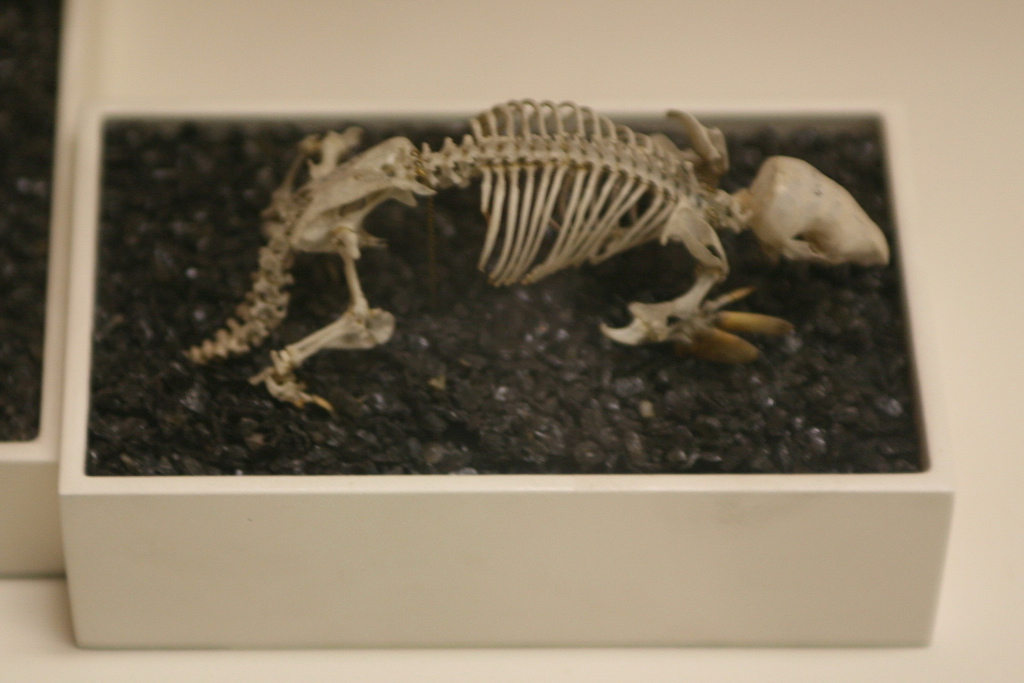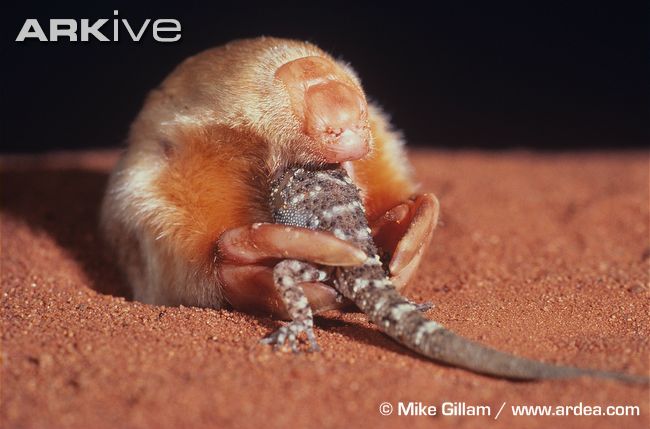Notoryctemorphia -- Golden blind digger



Origins
The name of this order combines two words notos (of the south) and oruktes(one who digs). So basically a digger from the south; in this case, the Australia's central deserts. The local name is Itjaritjari. These animals have large forepaws that they use to make burrows. It is hypothesized that when Australia was a younger continent, their ancestors would burrow in moss and undergrowth. As the continent has dried out so these animals took to burrowing in the sand dunes. This order is represented by 1 family containing a single genus and species, Notoryctes typhlops; although some scientists(typically, bickering among themselves) recognize a second species, Notorcytes caurinus.
Physical Characteristics
These animals are rarely seen even in their native habitat. They are blind are between 4 to 6 inches long. They have some unique adaptations for living in the sand. These moles have five toes on each feet and toes 3 and 4 on the front feet are enlarged to enable them to be used as spades to dig. There is a hypothesis that the pouch in the females is backward-facing to ensure that sand does not get in it. It is believed that they can hear but they don't really have any external ears. The nose has a rubbery shield on it in case it gets bumped against something hard than sand. Their habitat does not lend itself to condos so they don't build extensive and permanent burrows.
Geographic Distribution
View Larger Map
These little critters can be found in the deserts of Australia merrily burrowing away in the sands and trying to mind their own golden furred business. They are very rarely seen. Itjaritjari, or Southern Marsupial Mole, is known from the central deserts of the Northern Territory, Western Australia, South Australia, Australia. Both it and Notoryctes caurinus(if one inists on the two species definition) have been recorded in the vicinity of Warburton and may be living there sharing territory. All specimens north of Warburton and west of the Northern Territory border have been identified as N. caurinus. In addition, both species may be found in the Tanami Desert, however, this is unclear (Benshemesh 2004). Recent technique of cutting trenches in sand dunes to reveal burrows has extended the known distribution into the Simpson Desert. So I guess, the more golden haired moles you find...
Reproduction
Scientist think that females give birth to two young who cling inside the pouch which has two teats for them to suckle on until they are old enought to begin tunneling around on their own.
Feeding Habits
These little ones are quite able to forage through vegetable matter as well as being able to eat and consume insects,lizards and other small reptiles.
Videos